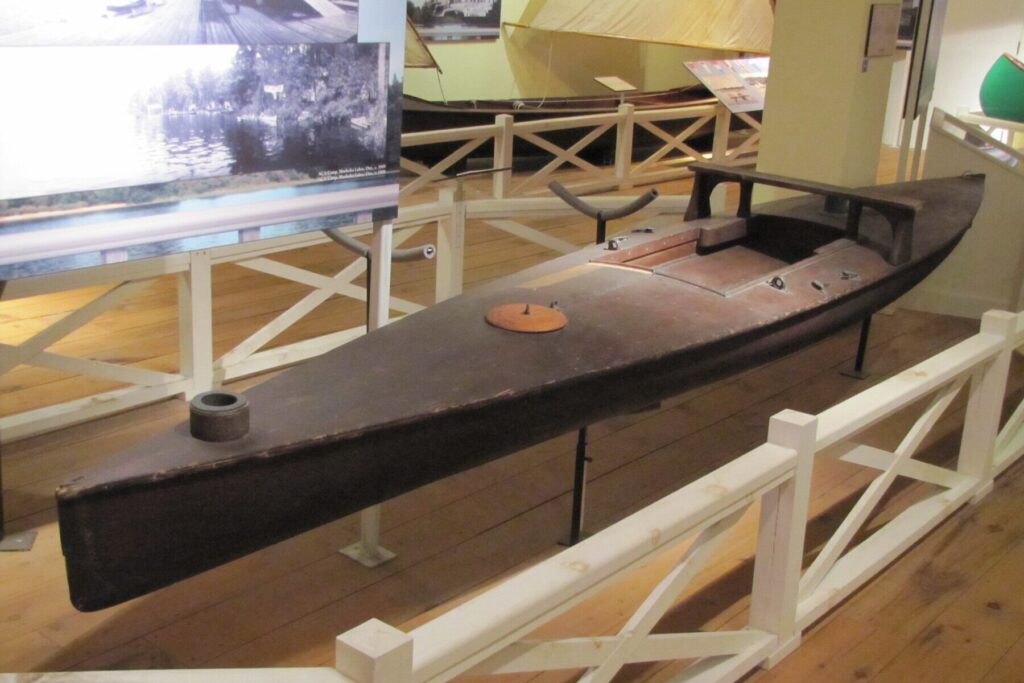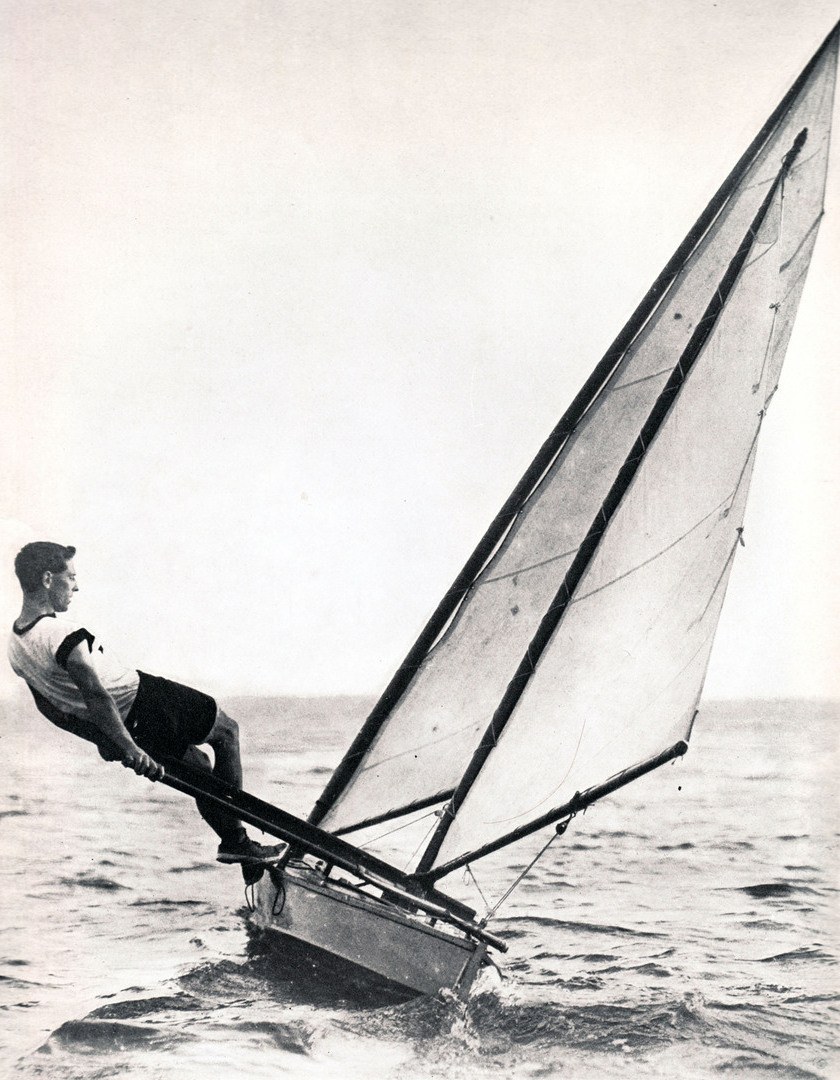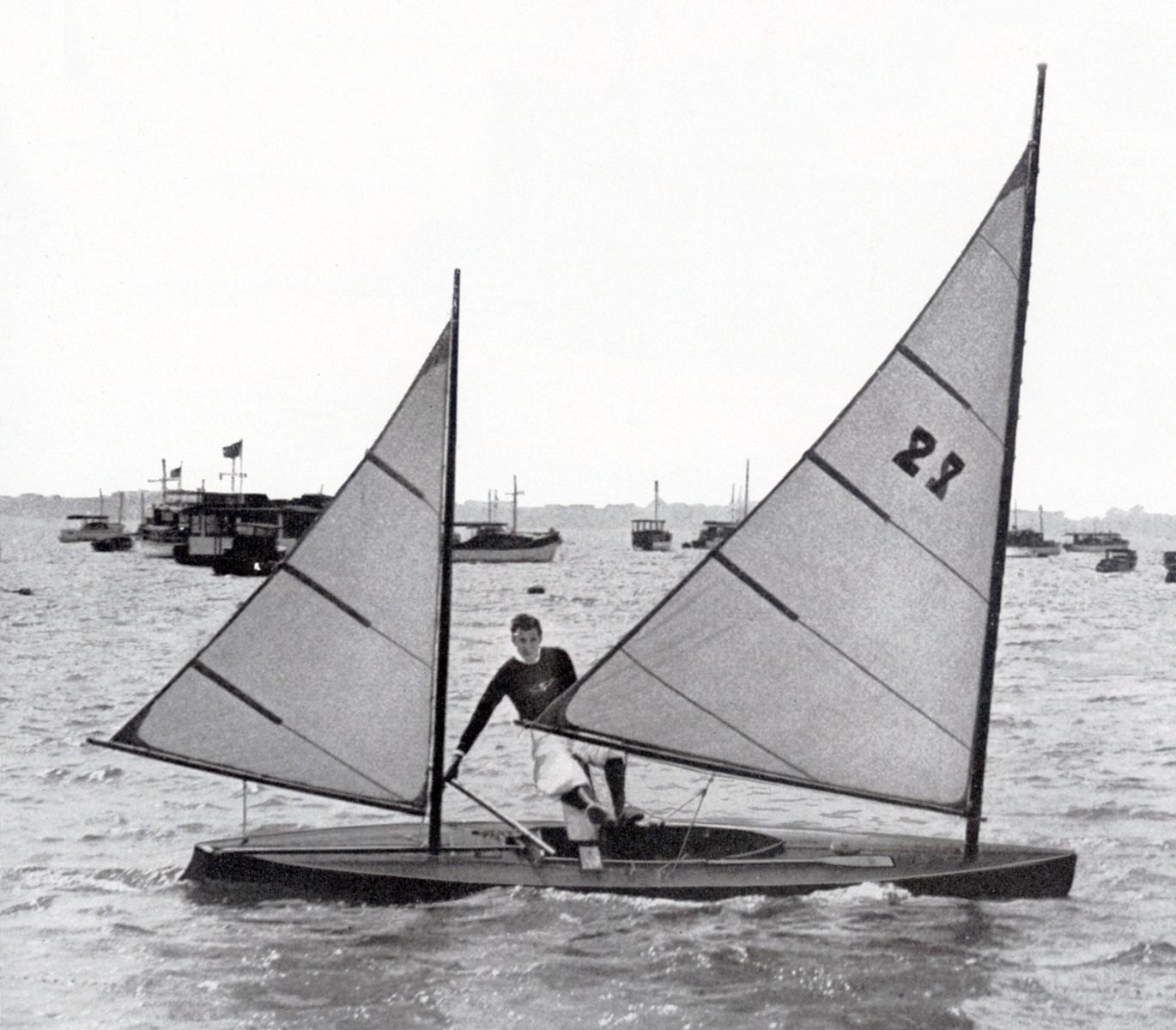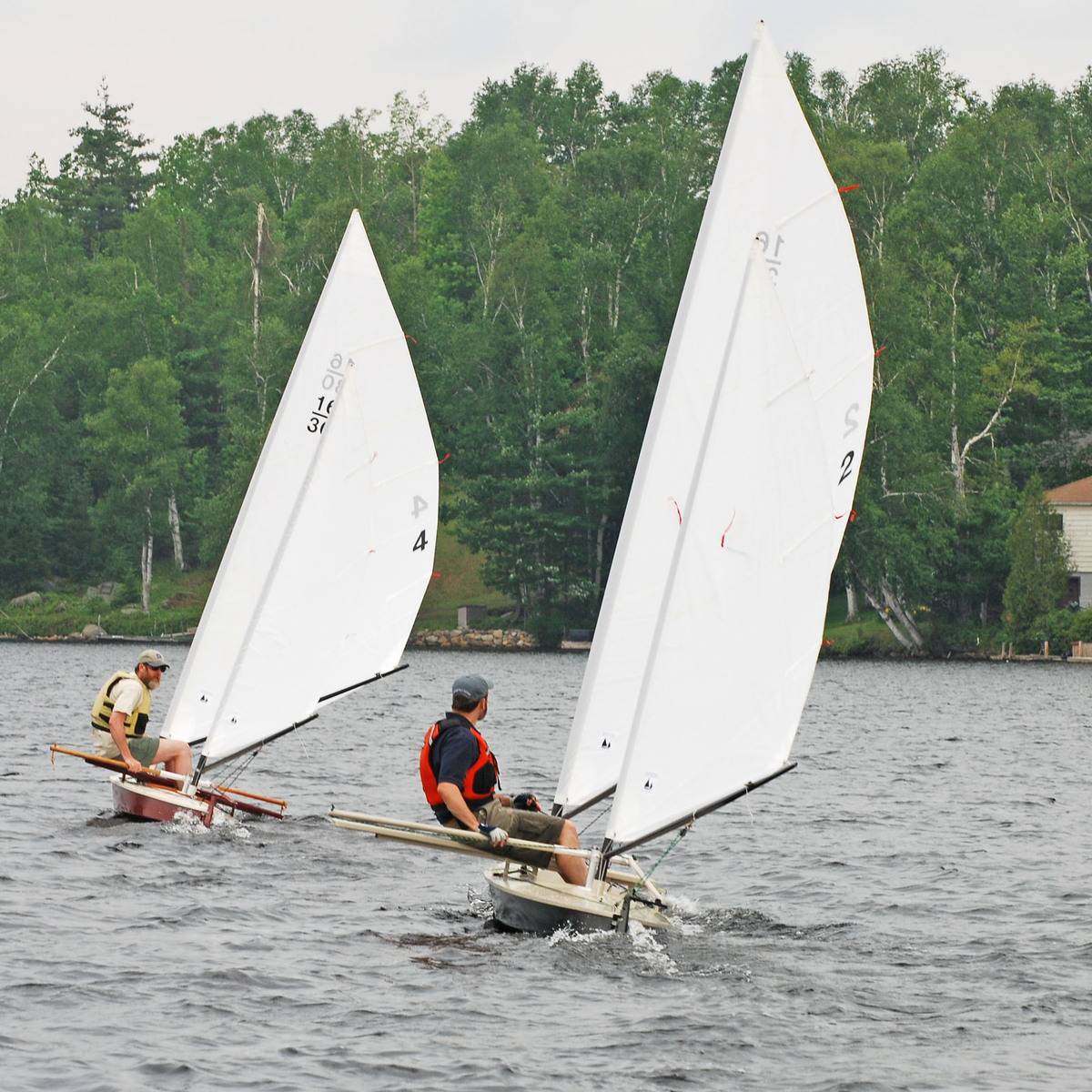Many of the thousands of visitors who come through the museum each year have seen this artifact in the museum’s “It Wasn’t All Work” gallery, and at least some of them have probably gone away thinking, “That’s a canoe? Doesn’t look like any canoe I’ve ever seen before.”

It is indeed a canoe, but it needs a little explanation, so here’s some background. This is a canoe called “Widgeon,” built by the William English Canoe Company in the early 20th century. She’s a sailing canoe, of a particular type known as a 16-30, which I’ll talk about in a minute. The reason she might not look like any canoe you’ve ever seen before is that she has about as much to do with the canoe hanging in your garage as the Toyota in your driveway has to do with a Formula 1 race car: that is, not very much.
“Widgeon” does’t make much sense right now because a lot of the boat is missing, including the most important part, which is her sailing rig. Here’s what a boat of her type would look like fully dressed with the sailing rig:

Sailing canoes of this type were known as “16-30s” because they were usually 16′ long x 30″ wide. Add to that about 90 square feet of sail and you have a package that is, to put it mildly, exciting to sail. As recreational canoeing developed in the later years of the 19th century, canoeists began to race each other with both sail and paddle. The best way to win a sailing race is to sail fastest, and in pursuit of that goal, canoes began to evolve. Beginning as multi-purpose boats that could be sailed or paddled, they gradually changed in order to sail faster. Cockpits became smaller, and smaller still. Sails became larger, and larger still. Eventually things reached a point where it was hard to keep the boat upright, so one solution was to get the skipper’s weight out over the side on an extended seat so that it had more leverage. After a few years of that kind of evolution, this is what you ended up with:

The sliding seat the skipper sits on is about 5′ long, and extends about 3′ beyond the side of the boat. In his right hand is a sliding tiller connected to the rudder that lets him steer from the end of the seat. Learning to sail these canoes is a bit like riding a bicycle: You fall over a lot until you get your balance, but once you get it figured out, it’s a lot of fun. In recent years some sailors have returned to these 100 year old canoes and started to build and sail them again. Someday, you may see a new version of “Widgeon” on the water as the museum keeps the rare sport of canoe sailing alive.







